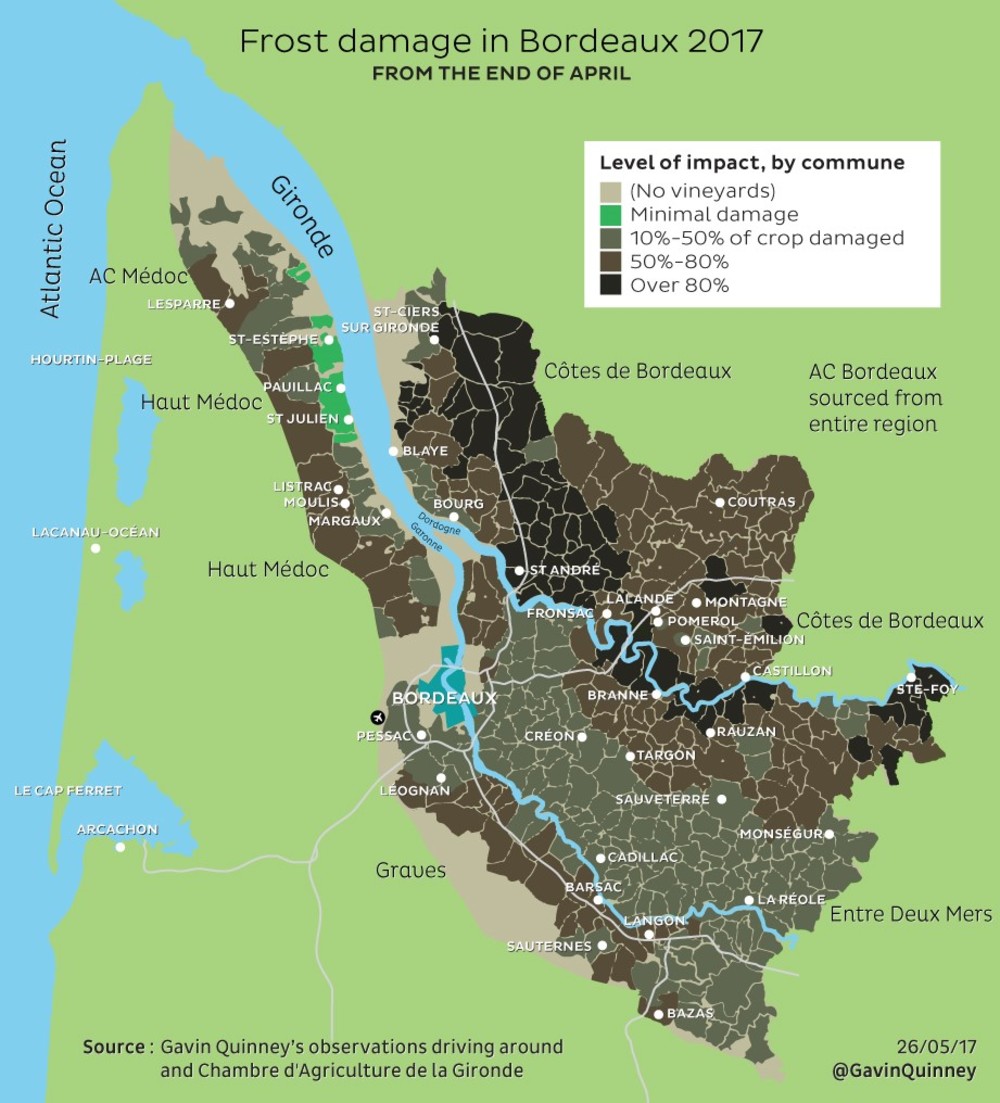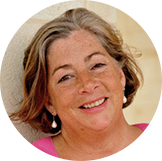Nous utilisons les cookies pour vous offrir une meilleure expérience utilisateur. Pour se conformer à la nouvelle directive concernant la vie privée, nous devons vous demander votre consentement pour sauvegarder des cookies sur votre ordinateur. En savoir plus.
En primeur: The 2017 vintage tasted
Two factors have dominated the press regarding the 2017 vintage in Bordeaux: one is the devastating frost that hit Bordeaux at the end of April 2017 on three consecutive nights severely damaging vineyards inland, or located in valleys or near woods . (see Gavin Quinney’s excellent map). The other is the “Seven Factor”: has 2017 broken the curse of vintages with a seven in them, the last great vintage being the historic 1947?
Let’s deal with the the frost first which reduced the crop greatly in some areas, notably in the Côtes areas east of Saint Emilion and in the vineyards of the Médoc, inland from the estuary such as in Moulis, Listrac and the Haut-Médoc.

The long-term damage of frost has yet to be estimated since it can play out over future growing cycles but the immediate damage is only too evident in drop or even lack of production in affected estates. One English wine merchant talked about the frost being a “snob” in that it spared many of the grand cru classé vineyards along the Gironde in the Médoc and those estates on the plateaux of Pomerol and Saint Emilion.
More important to the quality of the vintage than the frost, I believe, is the cooler weather during much of August which tempered the drought conditions, saving acidity and limiting the alcohol in the wines. The wines have less tannic structure than warmer vintages but reached full ripeness so, according to the official report from the Institute of Vine and Wine Sciences of Bordeaux (ISVV) there is thankfully a lack of pyrazines (the compound responsible for green pepper flavours) in the wines.
It is however rather a heterogeneous vintage but this seems to have more to do with winemaking than climate. Getting the picking date right was really important; the rather hollow taste in some of the southern Médoc wines seems to be a result of growers panicking when the September rains came and picking their Merlots too early. On the other side of the spectrum, especially in St. Emilion, there still seem to be winemakers who insist on over extracting their wines and then aging them too brutally in new oak. Personally, at our estates, we were so delighted by the fresh, fruity aromas when we first filled up the vats that we wanted to preserve this purity and acidity as best as we could. Many others did the same. The wines may have a lightness and a silkiness that we have not seen for a while in Bordeaux but they are not shirkers and I have been impressed to see that the indexes of tannins have been around the same as recent, richer tasting vintages. This will be a vintage to be enjoyed in the decade or so after the vintage when the beautiful fruit and floral elements are still in evidence, a vintage therefore to enjoy before opening your 2015s and 2016s.
So has the 2017 vintage broken the curse of the “Sevens”? Certainly 2017 is the best shot we have had at breaking the curse for 70 years, which is an awfully long time. Although the wines do not have the star appeal of the 2015 and 2016 vintages, they are certainly better than the 2014 vintage. In a few cases, I found myself liking the 2017s more than recent vintages but this may have been because the wines were so easy to taste, so fresh and fruity and zesty that I was swayed by their accessibility, their sheer deliciousness and drinkability; (my notes are peppered with adjectives such as “digest”, “gourmand”and “croquant”.)
The Cazes Family entitled their tasting notes “the Magnificent Seven”, not only because they now make seven wines but also because they feel so positively about the vintage. Having tasted well over 250 wines, I can tell you that 2017 cannot be characterized as a Left Bank or a Right Bank vintage. There are certainly more successful wines in the north of the Médoc (especially St. Julien, Pauillac, St. Estèphe) than in the southern appellations and the top wines of the Right Bank as well as the limestone plateau of St. Emilion and the surrounding Côtes appellations produced some lovely wines. It is also a beautiful vintage for the white wines of Bordeaux.

The Union des Grands Crus who do a sterling job organizing the En Primeur tastings registered almost 6,000 people for the 2017 En Primeur Week with the highest attendance coming from Asia (although I suspect several of these were wine tourists rather than serious buyers). Certainly the interest in En Primeur has become worldwide and wine lovers relish the excitement and the attention that the new vintage from Bordeaux provokes. We have tasted and found some lovely wines to offer en primeur and are proud of the châteaux that we represent. By all means, do feel free to call one of us for advice if you need further information but my tasting notes are appearing on our website at the same time as the châteaux release their prices little by little.
© Fiona Morrison M.W.




